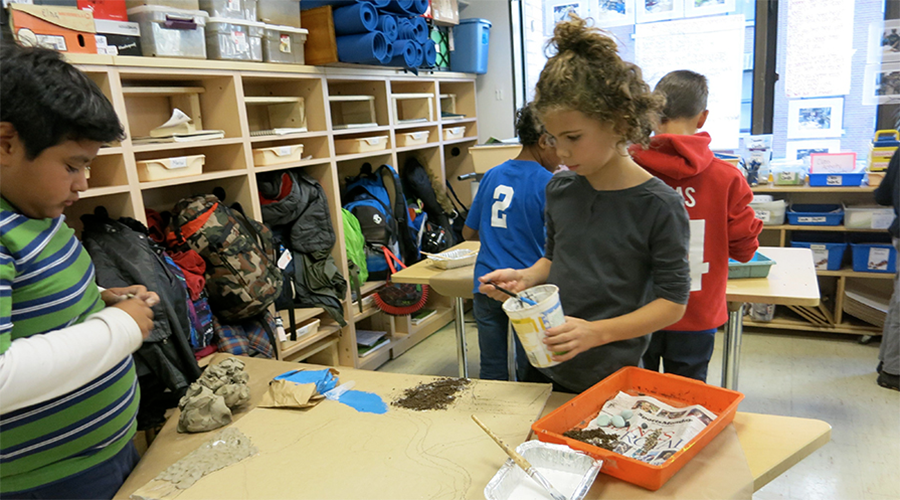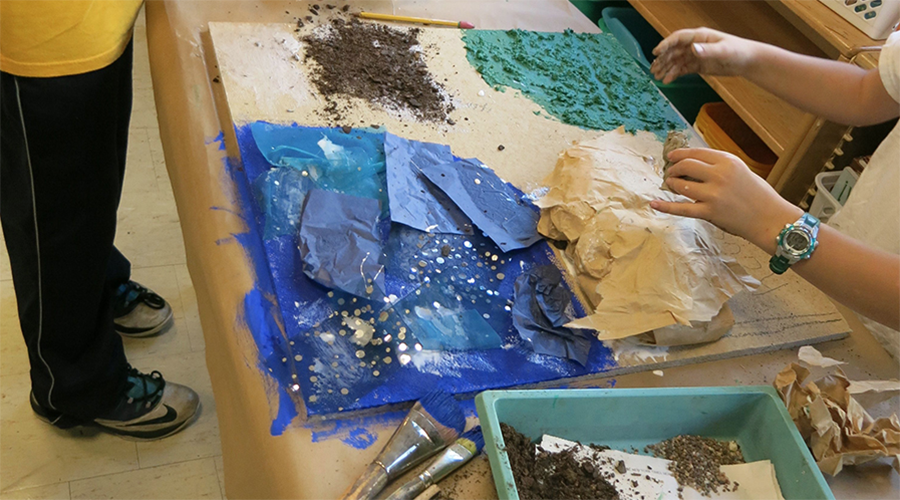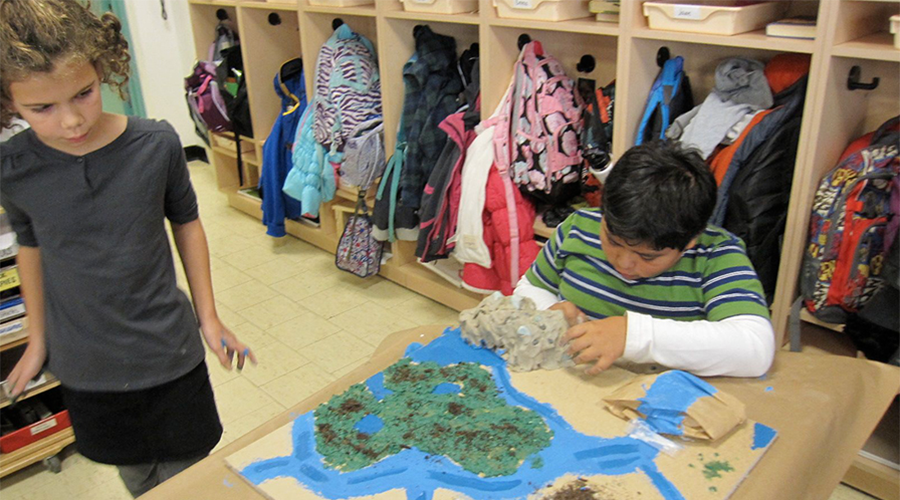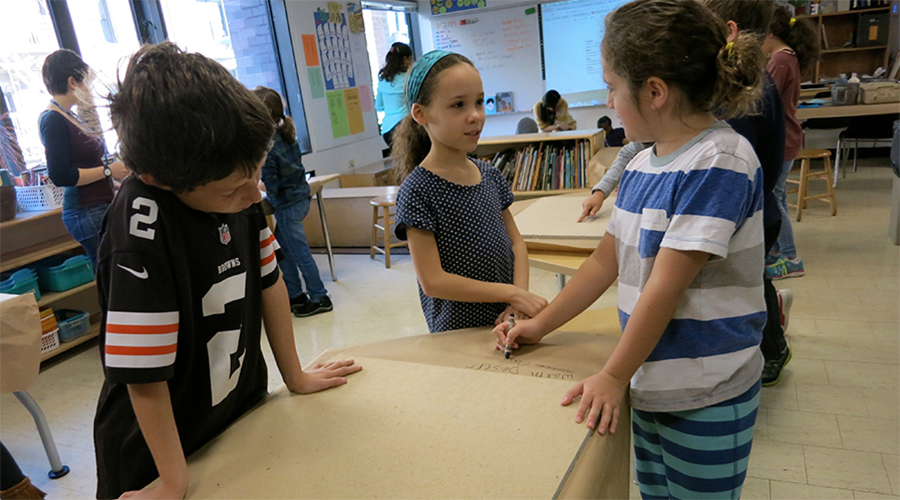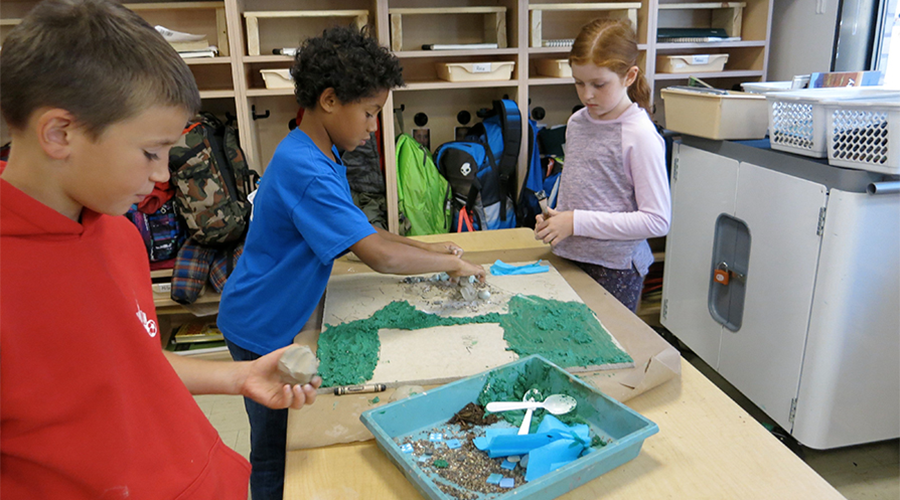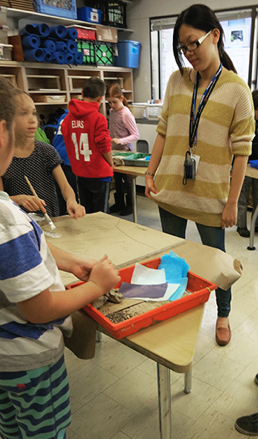 Schedule
Schedule
One 45-minute experience in a park, two to three 45-minute classroom lessons, and one full-day guided field trip
Goals
Students will begin to analyze the questions: What is a biome? What is topography? What are the different types of biomes? Where are these biomes located? How are they similar and different? What does the landscape and topography of these biomes look like?
Procedures
As the year begins, students explore with natural materials in an outdoor environment, such as a park. Students formally initiate this study by taking a field trip with a guided tour to the New York Botanical Garden. This way, students directly experience six specific biomes: Temperate Forest, Wetland, Rainforest (Lowland and Upland), and Desert (African and North American). Upon returning to the classroom, students are divided into groups of 3 or 4 so that each group studies one of these biomes in depth, builds that biome in Integrated Art, and later shares their learning with the whole class. Students also read and take notes on teacher-created informational texts and books about each biome.
Assessment
Formal: Teacher review of note-taking sheets, including homework reflection on field trip experience.
Informal: Asking children individually and in whole group about learnings, discoveries, and questions about their biome.
Suggestions for Teachers
- Carefully consider how you make groups of students, as this is a six-week project that requires much flexibility and collaboration.
- Make sure children have prior experience reading and note-taking with informational texts, including organizational and print features such as indexes and glossaries.
- Provide different options for accessing the written materials, such as teacher reads aloud to small groups, reading alone, reading in pairs, or independent reading.
- During group meeting, have children share fun facts they have learned about their biome, and teachers can keep a running list that develops throughout the study.
 Schedule
Schedule